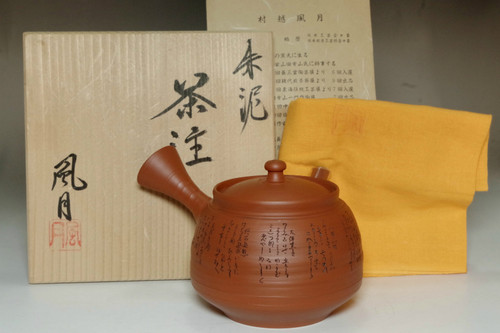Murakoshi Fugetsu (1950- ) Japanese tea pot in Tokoname ware #3833
- SKU:
- 3833
- Shipping:
- Free Shipping
- width (spout to handle): approx. 13.3cm (5 15⁄64in)
- height: approx. 8.5cm (3 11⁄32)
- weight: 137g (gross 481g)
The information of Murakoshi Fugetsu is here,
https://galleryjapan.com/locale/en_US/artist/1896/
His twitter,
https://twitter.com/hashtag/%E6%9D%91%E8%B6%8A%E9%A2%A8%E6%9C%88
Tokoname ware
The Tokoname kiln has the longest history and had the largest production area among Japan's six old kilns (Tokoname, Shigaraki, Bizen, Tamba, Echizen, Seto). Its beginning dates back to the late Heian period (approx. 1100 AD), and an estimated 3000 Anagama kilns (tunnel kilns) were built in the hilly areas of the the Chita Peninsula in the Aichi Prefecture, centered at Tokoname City. Tsubo (jars), Kame (wide-mouthed bowls), and Yamajawan (mountain tea bowls) were made using these kilns. Tokoname wares made during the Heian period up to the early Edo period are referred to as "Old Tokoname."
During the latter part of the Edo period up to the Meiji period, the adoption of China's Shudei (unglazed reddish brown pottery) and European techniques led to a rapid increase in the production of Tokoname wares. "Tokoname Ware" refers to earthenwares made since ancient times in the Aichi Prefecture, centered at Tokoname. It is still a firm favorite.





















